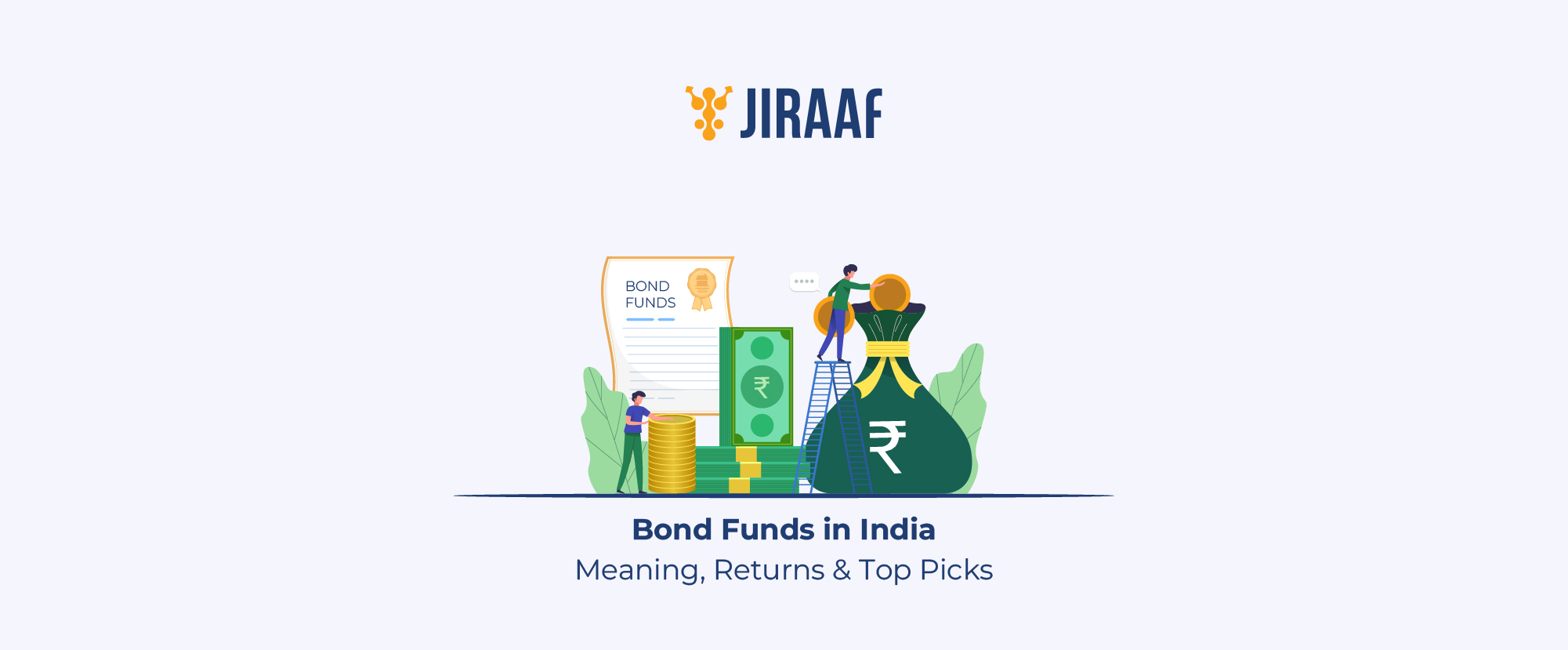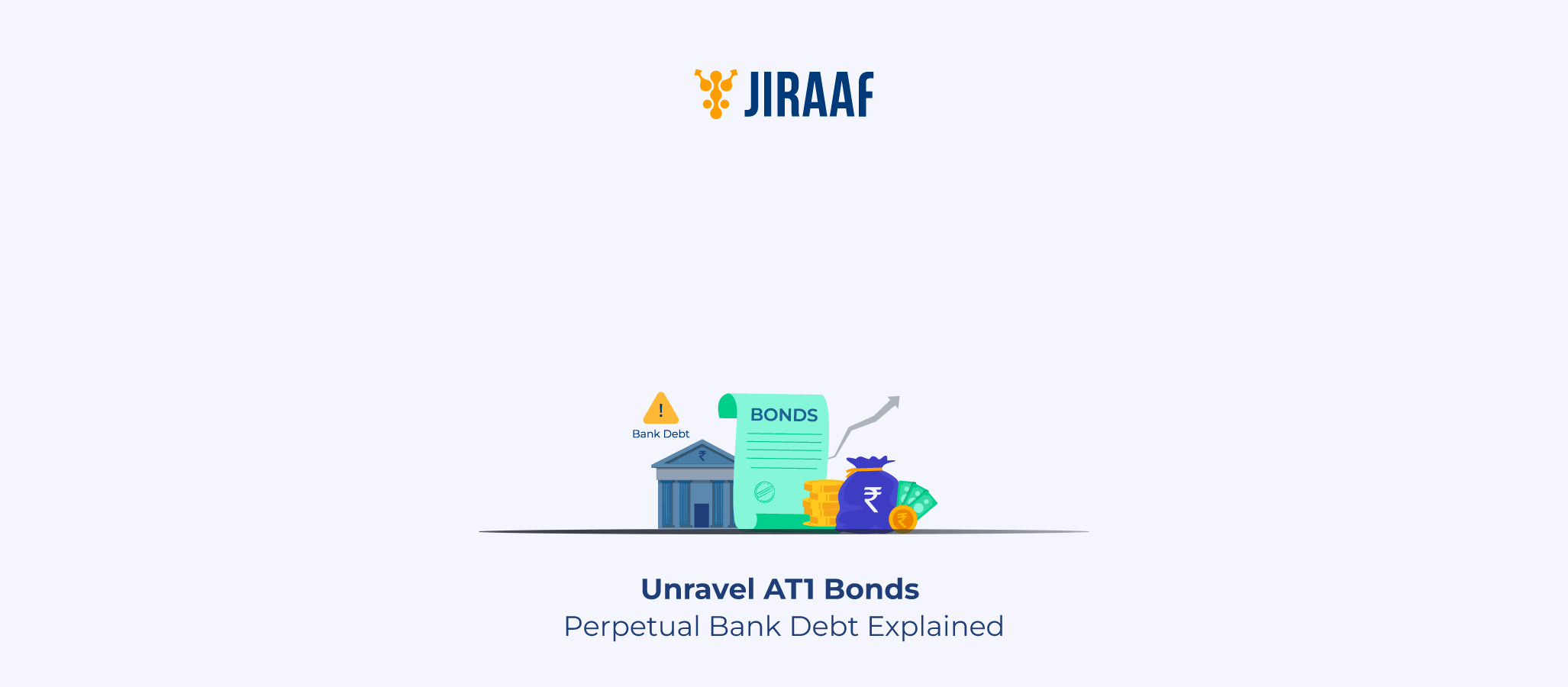India’s debt market has experienced significant growth in recent years. As of March 2025, the Indian corporate bond market was worth ₹53 trillion, with ₹10 trillion raised in FY 2024-25 alone!
If you are unsure about how to access this thriving market, bond funds offer a straightforward, accessible entry point. Like stock mutual funds, bond funds collect capital from multiple investors and create a diversified portfolio of bonds.
Whether you’re a conservative investor seeking steady returns or looking to diversify your equity-heavy portfolio, understanding bond funds can unlock new opportunities in your investment journey.
What is a Bond Fund? Understanding the Basics
A bond fund, also known as an income fund, pools money from multiple investors for investing in fixed-income securities. When you invest in a bond fund, you are investing in a fund that actively buys and sells government securities (G-secs), corporate bonds, debentures and money market instruments.
Bond funds are generally considered more stable and predictable than equity mutual funds, as they carry lower volatility and, depending on the fund’s holdings, comparatively lower credit risk. These funds can be structured as open-ended mutual funds, ETFs, or closed-end funds.
The asset allocation within bond funds varies widely depending on the fund’s specific investment strategy and regulatory mandates. For instance, SEBI rules require certain categories, like Corporate Bond Funds and Gilt Funds, to invest a minimum of 80% of their total assets in specific types of bonds.
For other funds, the mix of bonds and money market instruments is dynamic and not fixed. Therefore, the “80% bonds and 20% money market instruments” split is a rough guideline for a type of balanced portfolio and not a fixed rule for all bond funds.
In India, bond funds are mainly offered by mutual fund houses, insurance-linked plans, and financial institutions. Depending on maturity and strategy, they fall into four main types:
- Short-term bond funds: These funds invest in fixed-income securities with shorter maturities. Ideal for investors with a short investment horizon.
- Medium-term bond funds: Suitable for investors with an investment horizon of up to three years.
- GILT funds: GILT funds are most suitable for conservative investors as these funds invest exclusively in government securities.
- Dynamic bond funds: These funds actively adjust their portfolios by investing across bonds of different maturities to capture market opportunities and enhance returns.
Now that we’ve covered the basics and types of bond funds, let’s look at how these funds actually work in the Indian market.
How Do Bond Funds Work in India?
Bond funds in India are managed with a conservative investment approach. The fund managers of these funds only focus on bonds and other debt instruments with strong credit ratings and established financial profiles.
The main goal of these funds is to provide its investors with maximum steady and fixed income. It fulfils its aim in two ways
- The fund aims to increase its Net Asset Value (NAV) by the overtime appreciation in underlying bond holdings
- Recurring payments are distributed amongst investors through the interest earned on the underlying bonds.
Understanding how bond funds operate sets the stage for the next big question: What kind of returns can you expect as an investor?
Bond Fund Returns–What Investors Should Expect
Bond funds are designed to deliver steady, predictable returns, but the actual numbers depend on the type of fund and the market environment. While past performance can’t guarantee the future, here’s what investors have been seeing in India as of mid-2025:
Short-Duration Bond Funds
Short-term bonds have recently delivered around 7.8%–10% annually.
Medium-Duration Bond Funds
Medium-duration funds strike a balance between yield and risk. Top bond funds in this category have given 8.5%–12% returns.
Gilt Funds
Over the past year, Gilt funds have averaged around 5.5%-7.5%.
Corporate Bond Funds
These funds focus on high-quality corporate debt and have been among the more rewarding categories, delivering an average of 8%–9.5% returns.
Dynamic Bond Funds
By actively managing maturities, dynamic bond funds benefit from interest-rate shifts. Recent one-year returns have ranged from 7%–8%.
Best Bond Funds in India 2025–Top Performing Options
| Fund Name | Category | AUM (₹ Cr) | 3-Year CAGR (%) |
| Aditya Birla Sun Life Dynamic Bond Fund | Dynamic Bond Fund | 1,836.65 | 9.80 |
| ICICI Prudential All Seasons Bond Fund | Dynamic Bond Fund | 14,362.97 | 9.30 |
| Nippon India Corporate Bond Fund | Corporate Bond Fund | 6,998.47 | 8.38 |
| Axis Corporate Bond Fund | Corporate Bond Fund | 6,773.20 | 8.26 |
| SBI Magnum Gilt Fund | Gilt Fund | 11,322.01 | 7.87 |
*Data as per leading online bond providers
Before choosing any of the above bond funds to invest in, it is crucial to weigh in all the pros and cons of investing in bond funds.
Benefits and Risks of Investing in Bond Funds
Benefits
- Liquidity: Bond funds allow you to redeem units at any time. This makes them flexible for investors who may need access to their money.
- Diversification: A single bond fund invests in dozens of securities, spreading exposure across issuers, industries, and maturities. This reduces the impact of one bond’s poor performance on your overall returns.
- Professional Management: Experienced fund managers handle everything from research to bond selection and risk management. They actively monitor interest rate trends and issuer quality, so you don’t have to.
Risks
- Interest Rate Risk: Bond prices move inversely to interest rates, so when rates rise, the value of existing bonds falls. This can directly lower the Net Asset Value (NAV) of the bond fund. Long-duration funds are especially sensitive to this risk.
- Credit Risk: If a bond issuer defaults or gets downgraded, the fund may face losses. While managers choose high-quality issuers, credit events are not fully predictable.
- Principal Risk: No investment instrument guarantees return. Market volatility, defaults, or interest rate movements can cause your investment value to drop below the original capital. The possibility of losing part of your principal always remains.
Conclusion: Are Bond Funds Right for You?
Bond funds offer broad diversification and steady exposure to India’s debt markets. They appeal to investors who prefer professional management, easy liquidity, and moderate risk without needing to monitor individual issues or market fluctuations.
However, for specific short- to medium-term goals – such as wedding, buying a home, or building an education corpus – direct investments in high-quality corporate bonds may be more suitable. Corporate bonds often deliver 8%–15% returns and can be aligned precisely with a 1–5-year horizon.
Many investors combine both strategies, using bond funds for diversification and liquidity alongside selected individual bonds for potentially higher yields. Aligning each instrument with your investment timeline, risk tolerance, and objectives helps optimize outcomes.









